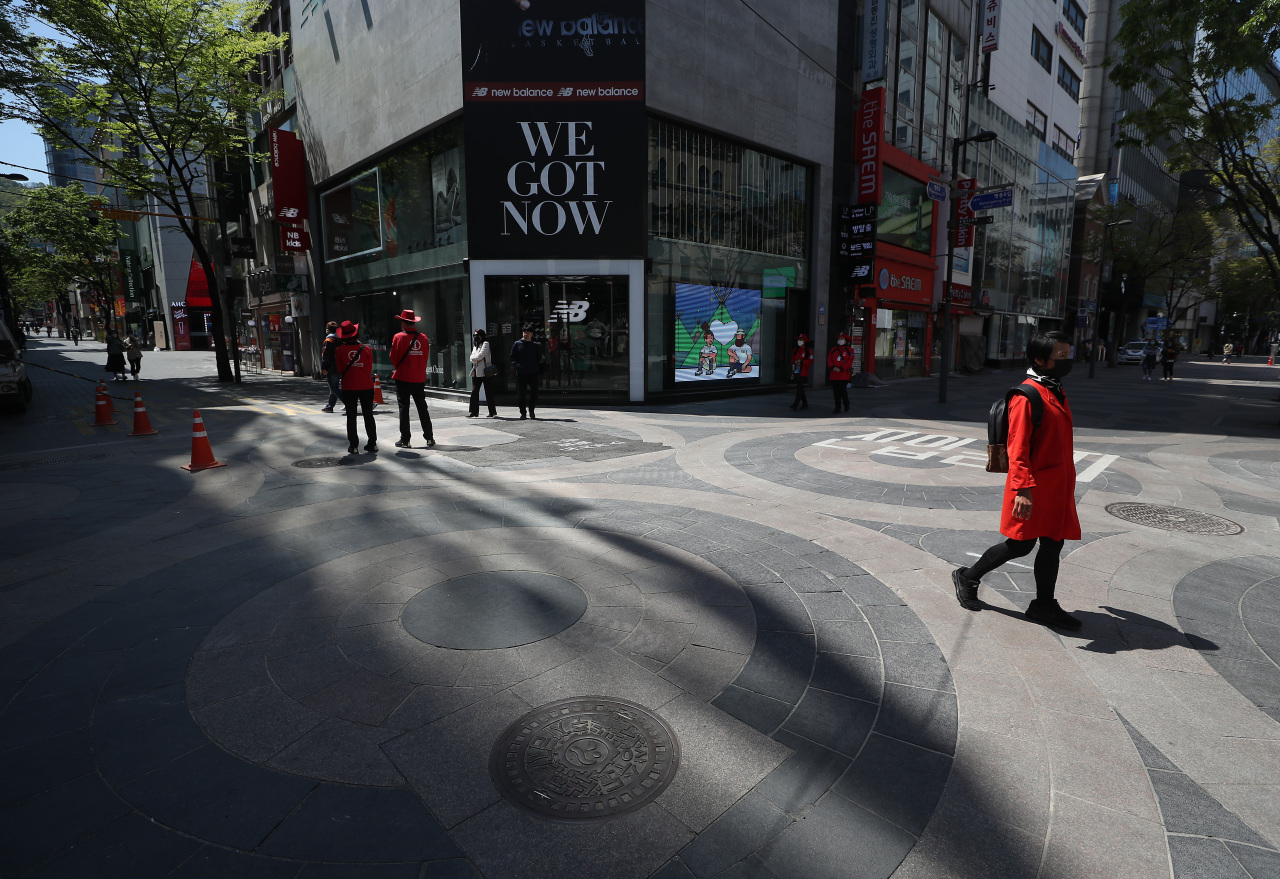
South Korea is gearing up to wean itself off of most of its coronavirus countermeasures, with the curve effectively suppressed.
But experts warn the country may be skipping a few steps before it is ready to relax physical distancing and emerge from a standstill.
“Resuming life after COVID-19 is uncharted waters Korea will be navigating,” said Prime Minister Chung Sye-kyun in a Sunday meeting with health officials.
Health Minister Park Neung-hoo said in a press briefing held the same day that reopening mid-pandemic was “without international precedent,” and that Korea, by taking the lead, may set an example for the rest of the world.
He sounded a hopeful note that if the stabilizing trend keeps up, the number of patients in isolation is projected to fall below 1,000 by late May or early June.
Korea’s recovery rate has topped 81 percent, with 8,764 out of 10,738 patients discharged from care upon recovery. In order to be deemed recovered, a patient has to test negative twice in a row with a 24-hour interval.
The number of daily cases has slowed, continuing to hover around 10 in the past week.
But the figure belies the long road to coronavirus recovery.
According to the Health Ministry data, about 30 percent of patients with mild cases of the disease have required treatment of over four weeks.
Korea’s longest case was a 61-year-old woman who spent 67 days hospitalized before she was released Friday. She is in home isolation for the time being on the possibility of a relapse.
The lengthy recovery period means more work accumulating for health workers and officials, said the Korea Centers for Disease Control and Prevention’s former director and pulmonologist Dr. Jung Ki-suck.
“The cases will keep emerging, and what worries me is that we have yet to assess how common COVID-19 really is,” said Jung, who helmed the agency in 2016-2017.
The number of confirmed cases is “naturally undercounted,” according to KCDC Deputy Director Kwon Jun-wook on Saturday. By how much was something even KCDC experts did not know.
KCDC Director Jung Eun-kyeong said in a response to a question from reporters Sunday that despite the aggressive testing, the actual extent of infection remains inestimable before antibody surveys are conducted.
The disease control agency has begun designing an investigation to determine how many in Korea have or have had COVID-19, she said, although when the plan could be executed was uncertain.
Public health authorities have stated that carrying out the antibody study before easing physical distancing, the date of which is slated for May 5, was “not considered necessary.”
Kwon of the KCDC said he believed Korea’s robust testing program would have helped narrow the discrepancy between the true infection rates and the reported tally.
Last month, the World Health Organization issued a protocol for antibody positivity surveillance in the general population, which would “allow inferences to be made about the extent of infection and about the cumulative incidence of infection in the population.”
Because the surveillance has so far focused chiefly on patients who are severely ill, “the extent and fraction of mild or asymptomatic infections” was not clear, the United Nations agency said.
An early April study of blood samples from some 3,300 residents of Santa Clara, California, found that the coronavirus infection was as many as 50 to 85 times more prevalent than the official count, said Dr. Kim Woo-joo, an infectious disease specialist at Korea University Hospital.
“Korea’s clinical criteria for testing excludes patients without symptoms,” he said. “This leaves out a huge chunk of mildly or unknowingly sick individuals that are just as capable of transmitting the disease.”
In the latest update, the KCDC said about 30 percent of detected cases were symptomless.
Now may be the most opportune time for a prevalence survey here, Kim said, when the virus situation has seemingly stabilized -- before a second wave hits.
“Even in Daegu, where the RT-PCR testing was most widely performed, the prevalence rate is only about 0.3 percent. This is about 10 to 13 times less than the estimated rates from (overseas) studies,” he said.
Other unsolved mysteries include suspected relapse cases, which totaled 263 as of Sunday. The city of Sejong is tracking all of its released former patients, and found that about 20 percent of them tested positive again without developing symptoms.
Vice Health Minister Kim Gang-lip said on Monday that nine of the cases confirmed in the last two weeks were untraceable -- meaning from whom they got the disease was unidentified.
“Every move has to have solid basis on science,” Kim of Korea University Hospital said, adding that reopening the country without due caution was reckless. “The fight is not over yet.”
By Kim Arin (arin@heraldcorp.com)




![[Herald Interview] 'Amid aging population, Korea to invite more young professionals from overseas'](http://res.heraldm.com/phpwas/restmb_idxmake.php?idx=644&simg=/content/image/2024/04/24/20240424050844_0.jpg&u=20240424200058)

![[Pressure points] Leggings in public: Fashion statement or social faux pas?](http://res.heraldm.com/phpwas/restmb_idxmake.php?idx=644&simg=/content/image/2024/04/23/20240423050669_0.jpg&u=)













